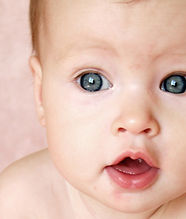™
Email hello@splash.physio
Phone (03) 4422 2970
Aquatic and land physiotherapy for babies, children & young people
Formal assessments
What can your child do? What will they learn next?
Along with careful observation of your child, formal assessments can be very useful.
For example:
-
assessing a child's developmental skills and tracking change at all ages, from birth through to adulthood
-
tracking a child's changing head shape
-
assessing a child's fitness or walking endurance
-
assessing higher level mobility skills like running, hopping and running up stairs
They can be used to inform our goals, our treatment approach, and to track change.
They can also be helpful in making referrals to other health professionals and advocating for funding for inclusion support at kindergarten and school.

Examples of formal outcome measures we can use are:
-
for babies' gross motor development: GMs (the General Movements Assessment), TIMP (Test of Infant Motor Performance), AIMS (Alberta Infant Motor Scale), and the HINE (Hammersmith Infant Neurological Examination) for neurological considerations
-
for assessing babies' head shape: Cranial Technologies severity assessments for plagiocephaly, brachycephaly and scaphpycephaly
-
for children's movement development up to 6 years of age: NSMDA (Neuro Sensory Motor Developmental Assessment)
-
for children's movement: GMFM (Gross Motor Function Measure), Paediatric Balance Scale
-
for movement and ball skills, eg. TGMD-3
-
for classifications in consultation with your team for children with cerebral palsy: GMFCS (Gross Motor Functional Classification Score); MACS (Manual Ability Classification System); CFCS (Communication Function Classification System); EDACS (Eating and Drinking Classification System); FMS (Functional Mobility Scale)
-
for movement speed: 6 minute walk test, 10 metre walk test, timed up and go, which can be used from childhood into adulthood allowing for longer term tracking
-
for higher level mobility and balance: HiMAT (High Level Mobility Assessment Test) which can be used from childhood into adulthood allowing for longer term tracking
-
for bike riding, the Cycling Skills Checklist
-
assessments specific to a group eg. Achondroplasia developmental milestones, PJ Ireland; the CHOP INTEND for babies with SMA1
We also like to use the GAS (Goal Attainment Scale) and COPM (Canadian Outcome Performance Measure) to develop and track your goals.



